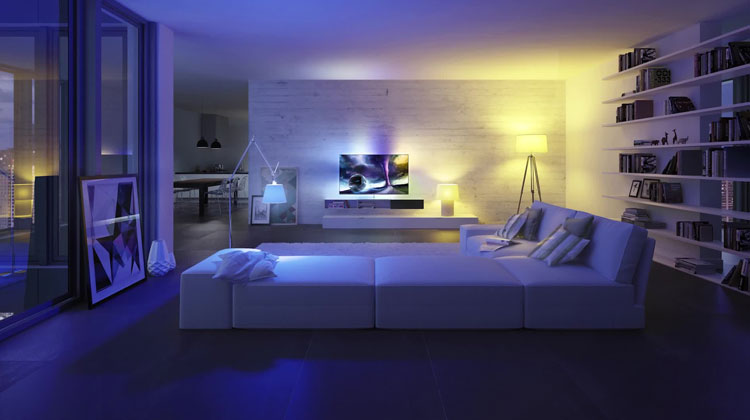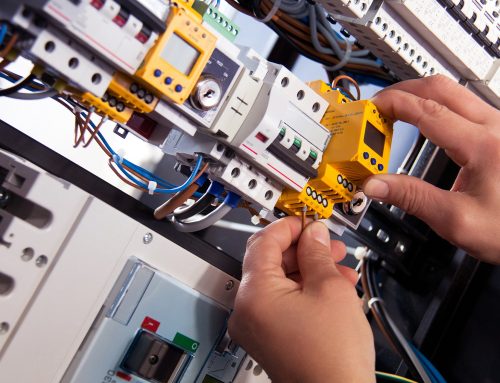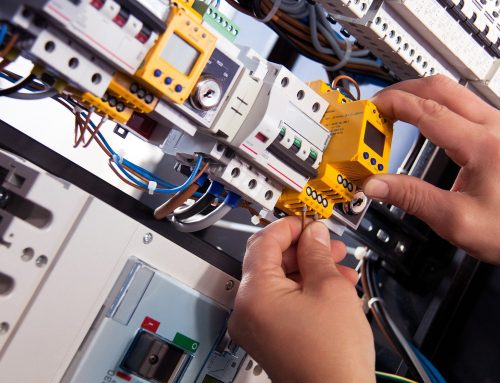What is smart lighting
Ever wonder how lighting globes can change colour or brightness without the need of a switch. This is the new norm and its becoming so much easier to install these intelligent systems through-out your home. Most smart lighting systems will have a smart hub, its a central device that connects to your WI-FI network allowing you to control your lighting through a smart phone or even voice control. You will find light bulbs on the market that will not need a central device to allocate an app on your smart phone, its just as simple as screwing in the globe and downloading the app for connectivity. There are many smart hub home devices, Amazon Alexa and Google Assistant would be our top 2 for any central device to control your smart lighting..
Your smart home hub device
A device that allows you to operate your lighting universally when connected to an app on your smart phone. Your smart home hub will integrate with different communication protocols such as
blue-tooth, your WI-FI network, Zigbee and Z-Wave. With technology moving fast some smart home hubs do not use physical software at all and rely solely on cloud storage to connect all smart devices together. We believe that using a smart home hub is the way to go until cloud technology is better equipped to deal with its WI-FI interruptions and other unreliable functions.
Before choosing on a smart home hub for your lighting, make sure your smart switches are compatible with the smart hub you purchase. So many companies have products that react differently to protocols or languages meaning the compatibly with other hubs will be limited. At this current stage companies are trying to create hubs that will incorporate all smart devices and protocols. The smart switch is your isolation to switch on/off your light, smart switches might need extra cabling to whats normally there for your standard switch, the neutral wire is needed for the switch to illuminate in colour and that colour is normally a standard blue. All the main players like, Google Home, Amazon Alexa, Phillips Hue, Nue Zigbee all have their own brand of smart switches and most are all compatible with other smart home hubs.
What are the Protocol types
Protocol a means of communication and is much needed for your smart hub to connect with switches and globes.
WI-FI – probably the simplest method of connecting to your devices. We advise setting up a network mesh system that will allow complete coverage and connectivity for your smart bulbs or globes. Both Zigbee and Z-Wave will operate as mesh networks in which all nodes {connection point} are interconnected and work together to route information to each device or switch. The big advantage when using these protocols, the more devices you add the stronger the network becomes. While
WI-FI would be sufficient enough to control your lighting, using Zigbee or Z-Wave might be necessary for connecting other smart devices such as, security, audio, video and even temperature.
The smart home hub will provide total control over your devices compared to a WI-FI network which has limited communication with your devices. Zigbee alone can handle up-to over 200k nodes, a node being a smart device, switch or bridge allowing you to connect between the smart device and internet. Zigbee does have its limitations as all devices would need to be in 35 feet range of each other to function. Z-Wave however has a range of about 300 feet but can only handle 230 nodes.
Bluetooth – don’t have internet? Bluetooth is the only way to go! Your smart switches will be controlled via Bluetooth and your mobile phone app. Bluetooth has limited range but will form a mesh network with other existing smart switches. For instance, if your looking to switch lights on
from one end of the home to another you will need the mesh network to reach the switch that will operate the light in question.
Zigbee/Z-wave – It can be overwhelming for customers when we speak about Zigbee/Z-Wave as their are so many options out there to fit their design needs. Both Zigbee and Z-Wave operate as mesh networks similar to Bluetooth resulting in your Wi-Fi bandwidth being saved. Z-Wave operates on a longer range than Zigbee but Zigbee has the potential to connect a lot more smart devices than its counterpart. Z-Wave uses less power than Zigbee and potentially operate on a pair of AA batteries for years depending on its application and configuration. Frequency range, Z-Wave operates 800 – 900 MHz range which will avoid other wireless signals operated on the 2.4 GHz such as Bluetooth, WI-FI and Zigbee and any resulting interference’s can develop a signal loss to the system. One of the biggest advantages for Z-Wave is its compatibility with other devices regardless of its manufacturer, it has even ensured that all new devices communicate with older type devices.
Why Smart Lighting is the Future
Smart lighting is relatively small when it comes to IoT {internet of things} and with such an array of smart appliances anything is possible. Can you imagine been awaken by your alarm through control then 2 mins later you get a subtle light from the bulb, next thing your window blinds start to open up letting in that much needed sunlight which will surely get you moving out of bed. Why not have the coffee brewing and the toast heating up as you wonder towards the kitchen.
Late for work, why not have that friendly reminder 10 minutes before your due to leave and as you do have the lights switch off, the door locks and the alarm sets. How much simpler would you want it to be but this were the future of technology is heading.










